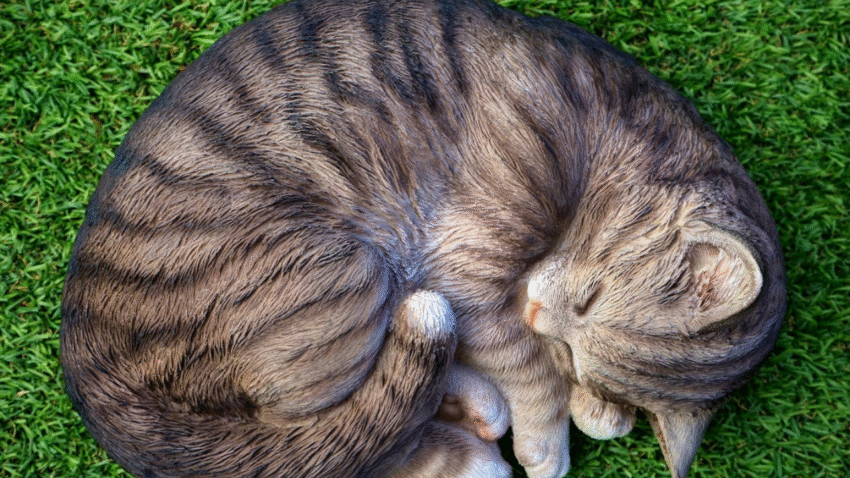Introduction
Wondering how to transition your kitten from milk to solids without stress or tummy trouble? You’re in the right place. This step-by-step guide shows you how to wean a kitten from milk to solid food safely and gently. You’ll learn the ideal timeline, what types of food to offer, and how to make the process smooth for both you and your growing feline.
Why Weaning Matters for Kittens
Weaning is a major developmental milestone. It helps kittens shift from total dependence on mother’s milk (or a milk replacement) to eating solid food. This transition is critical for physical growth, digestive health, and independence. Done right, weaning lays the foundation for a healthy, balanced diet in adulthood.
The weaning process typically starts between 4–5 weeks of age and finishes by 8–10 weeks. Starting too early or rushing the process can cause digestive upset, stress, or nutritional deficiencies — especially for orphaned kittens.
Step-by-Step Guide to Weaning Your Kitten
1. Start at the Right Age
Begin weaning at around 4 weeks old. At this stage, kittens’ teeth are developing, and they’re starting to show interest in their environment — including food bowls.
For orphaned kittens raised on bottle formula, you may notice them chewing on the nipple or being curious around food dishes. That’s your cue to begin weaning.
2. Choose the Right Food
Start with:
- Wet kitten food (pâté-style) – Easy to lap up and digest.
- Kitten milk replacer – Mix with wet food to make a gruel.
- Shallow dish or saucer – Avoid deep bowls to make access easier.
Never use cow’s milk — it can upset a kitten’s stomach.
3. Prepare a Gruel Mixture
Create a soupy mix of canned kitten food and kitten formula. Aim for:
- 1 part wet food
- 2 parts formula
- Mix until smooth
Gradually thicken the mixture over the next 2–3 weeks as your kitten adjusts.
4. Introduce Food Gently
Place the mixture in a shallow dish. Gently guide the kitten toward the food. You can dip your finger in the gruel and let them lick it to spark interest.
Expect messiness at first — kittens may step in it, lick their paws, or even sneeze in the bowl. It’s all part of the learning process.
5. Reduce Milk Feedings Gradually
As your kitten eats more solids, start cutting back on bottle or nursing sessions. By 6–7 weeks, most kittens can get most of their nutrition from food.
Suggested feeding schedule:
- Weeks 4–5: 3 bottle feeds per day + gruel
- Weeks 6–7: 1–2 bottle feeds per day + thicker food
- Week 8+: Fully transitioned to solid kitten food
6. Offer Fresh Water
Introduce a shallow water dish next to the food. Kittens need to learn where to find water once milk is phased out. Refresh daily and ensure it’s always clean.
Common Mistakes to Avoid
1. Starting Too Early
Weaning before 4 weeks can cause digestive issues and emotional stress. Always wait until your kitten is developmentally ready.
2. Using the Wrong Type of Food
Adult cat food, cow’s milk, or human food is not suitable for kittens. Always use kitten-specific products rich in protein and fat for growth.
3. Switching Too Quickly
Abrupt changes can cause diarrhea, vomiting, or food rejection. Gradual transitions are gentler on tiny tummies.
4. Overfeeding or Underfeeding
Kittens need frequent, small meals. Monitor their weight and adjust portions accordingly. Four to five small feedings per day is ideal during weaning.
5. Skipping Hydration
Don’t assume your kitten will drink water naturally — show them the bowl and refresh it daily. Hydration is essential during the transition.
Extra Tips & Recommendations
1. Clean Up Often
Weaning is messy! Wipe your kitten’s face and paws after meals. Wash dishes daily to prevent bacteria build-up.
2. Monitor Weight Gain
Healthy kittens should gain about 10–15 grams per day. Use a kitchen scale to track growth, especially for orphaned kittens.
3. Use a Feeding Station
Place food and water bowls on a mat or tray. This makes cleanup easier and helps your kitten recognize the mealtime space.
4. Introduce Dry Food Slowly
Once your kitten is eating wet food confidently (around 7–8 weeks), you can mix in a small amount of dry kitten kibble to help them adjust to different textures.
5. Be Patient
Every kitten is different. Some wean quickly, while others need extra encouragement. Stay calm, supportive, and consistent.
Conclusion
Weaning your kitten from milk to solid food is a crucial stage in their development. Start around 4 weeks old, use soft gruel made with kitten formula and wet food, and gradually reduce milk feedings over time. Stay patient, keep things clean, and watch for signs of progress. With a little care and attention, your kitten will be eating solid food confidently in just a few weeks.
🐾 Small steps lead to big growth — and a happy, healthy kitty.
